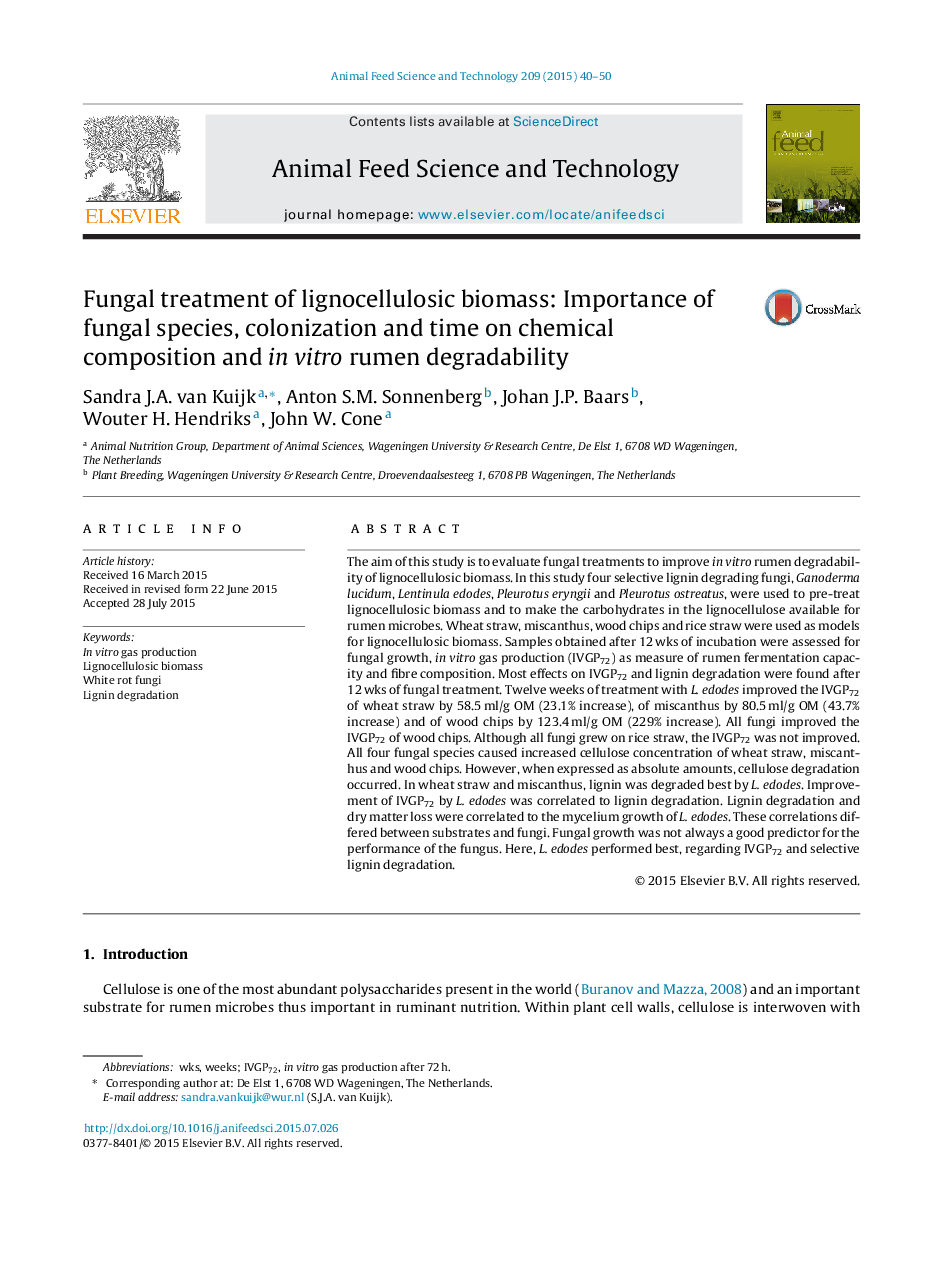| Article ID | Journal | Published Year | Pages | File Type |
|---|---|---|---|---|
| 2419369 | Animal Feed Science and Technology | 2015 | 11 Pages |
•L. edodes improved the in vitro degradability of wheat straw, wood and miscanthus.•Increase in in vitro gas production is strongly correlated to lignin degradation.•Fungal treatment results in an increased cellulose concentration.•Duration of fungal treatment is an important aspect in lignin degradation.•Fungal growth is not always a good indicator of a successful fungal treatment.
The aim of this study is to evaluate fungal treatments to improve in vitro rumen degradability of lignocellulosic biomass. In this study four selective lignin degrading fungi, Ganoderma lucidum, Lentinula edodes, Pleurotus eryngii and Pleurotus ostreatus, were used to pre-treat lignocellulosic biomass and to make the carbohydrates in the lignocellulose available for rumen microbes. Wheat straw, miscanthus, wood chips and rice straw were used as models for lignocellulosic biomass. Samples obtained after 12 wks of incubation were assessed for fungal growth, in vitro gas production (IVGP72) as measure of rumen fermentation capacity and fibre composition. Most effects on IVGP72 and lignin degradation were found after 12 wks of fungal treatment. Twelve weeks of treatment with L. edodes improved the IVGP72 of wheat straw by 58.5 ml/g OM (23.1% increase), of miscanthus by 80.5 ml/g OM (43.7% increase) and of wood chips by 123.4 ml/g OM (229% increase). All fungi improved the IVGP72 of wood chips. Although all fungi grew on rice straw, the IVGP72 was not improved. All four fungal species caused increased cellulose concentration of wheat straw, miscanthus and wood chips. However, when expressed as absolute amounts, cellulose degradation occurred. In wheat straw and miscanthus, lignin was degraded best by L. edodes. Improvement of IVGP72 by L. edodes was correlated to lignin degradation. Lignin degradation and dry matter loss were correlated to the mycelium growth of L. edodes. These correlations differed between substrates and fungi. Fungal growth was not always a good predictor for the performance of the fungus. Here, L. edodes performed best, regarding IVGP72 and selective lignin degradation.
